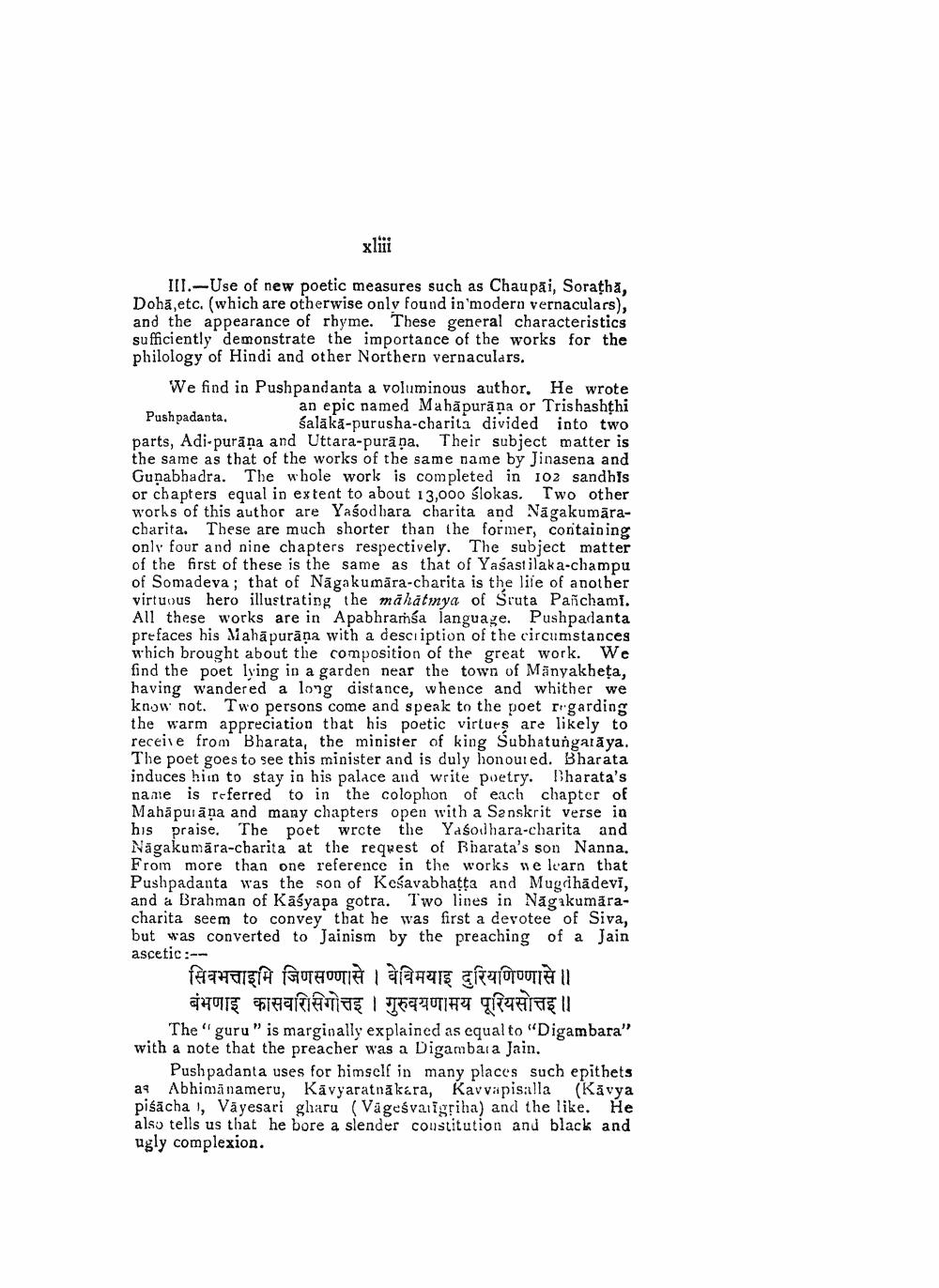________________
III.-Use of new poetic measures such as Chaupai, Soratha, Dohā,etc. (which are otherwise only found in modern vernaculars), and the appearance of rhyme. These general characteristics sufficiently demonstrate the importance of the works for the philology of Hindi and other Northern vernaculars. We find in Pushpandanta a voluminous author. He wrote
an epic named Mahapurāņa or Trishashthi
salaka-purusha-charita divided into two parts, Adi-purāna and Uttara-purā pa. Their subject matter is the same as that of the works of the same name by Jinasena and Gunabhadra. The whole work is completed in 102 sandhis or chapters equal in extent to about 13,000 Slokas. Two other works of this author are Yasodhara charita and Nāga kumāracharita. These are much shorter than the former, containing only four and nine chapters respectively. The subject matter of the first of these is the same as that of Yasastilaka-champu of Somadeva; that of Nāgakumāra-charita is the life of another virtuous hero illustrating the mahatmya of Sruta Panchami. All these works are in Apabhramsa language. Pushpadanta prefaces his Mahāpurāna with a description of the circumstances which brought about the composition of the great work. We find the poet lying in a garden near the town of Mānyakheta, having wandered a long distance, whence and whither we know not. Two persons come and speak to the poet rigarding the warm appreciation that his poetic virtues are likely to receive from Bharata, the minister of king Subhatungarāya. The poet goes to see this minister and is duly honoured. Bharata induces hiin to stay in his palace and write poetry. Bharata's nane is referred to in the colophon of each chapter of Mahāpulāna and many chapters open with a Sanskrit verse in his praise. The poet wrote the Yasodhara-charita and Nāgakumāra-charita at the request of Bharata's son Nanna. From more than one reference in the works we learn that Pushpadanta was the son of Keśavabhatta and Mugrihadevi, and a Brahman of Kasyapa gotra. Two lines in Nagakumăracharita seem to convey that he was first a devotee of Siva, but was converted to Jainism by the preaching of a Jain ascetic:--
सिवभत्ताइमि जिणसण्णासे । वेविमयाइ दुरियणिण्णासे ॥
बंभणाइ कासवरािसंगोत्तइ । गुरुवयणामय पूरियसोत्तइ ।
The" guru" is marginally explained as equalto "Digambara" with a note that the preacher was a Digambaia Jain.
Pushpadanta uses for himself in many places such epithets a Abhimānameru, Kavyaratnākara, Kavvapisalla (Kavya piśācha !, Vāyesari gharu (Vägeśvaligriha) and the like. He also tells us that he bore a slender constitution and black and ugly complexion.




